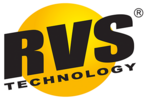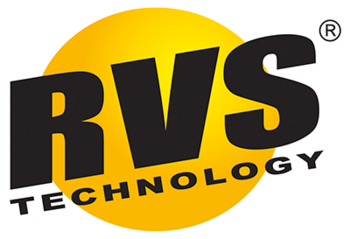FAQs
What exactly is RVS Technology®?
RVS Technology® Tribo (nano-) Ceramics can be considered as an advanced repair for engines, gearboxes, and other mechanisms. If your machine has normal wear problems like noise, smoking, higher fuel or oil consumption, decrease in power and compression levels and general vibrations - RVS Technology has the capacity to restore it.
RVS Technology works also as a preventive method, protecting your engine and other mechanisms against coming wear. For example; treatment of car parts will protect your car from serious problems in the future.
What does RVS mean?
Restores Vital Surfaces
Is RVS an oil additive?
No! Unlike other oil additives on the market, RVS Technology® products produce a nano-ceramic layer that integrates with the metal friction surfaces of your engine, transmission, differential etc. That’s why it lasts at least 60,000 miles ( 100,000 kms) and oil changes do not affect it. RVS does not affect the properties of the oil. The idea of oil additives is to improve the oil properties and they have to be re-applied at every oil change.
What are cold starts and will your products help reduce/eliminate them?
Cold start is a phenomenon observed when an engine is started in cold weather – during the first few seconds, the oil is thick and oil pressure is low, and the engine is starved of oil – this causes parts inside to wear due to the friction caused by lack of proper lubrication. The Triboceramic layer created by RVS Technology® protects the components inside an engine from this oil starvation, because even without oil, the triboceramic layer is very slippery, thus minimizing the damage caused by cold starts.
Is RVS Technology just another oil additive?
No! Unlike oil additives on the market, RVS Technology® products produce a Triboceramic layer that integrates with the metal friction surfaces of your engine, transmission, differential etc. That’s why it lasts for 60,000 miles (100,000km) and oil changes do not affect it. The idea of oil additives is to improve the oil properties and have to be re-applied at every oil change.
Do I need to re-apply RVS Technology® at every oil change?
No! As mentioned above, our products react directly with the metal components, forming a Triboceramic layer that is durable and that becomes an integral part of the metal components. Oil changes do not affect the RVS Technology® treatment.
How do I know what is the right product for me?
Our products are categorized by the oil capacity of the machine you are treating. If your engine holds 4 qts/liters of oil, you need a G4 treatment. If it holds 5, you need the next highest number – G6. For example; an automatic transmission with 6 liters of ATF needs a T6A, and so on. If you are unsure of the fluid capacities of your particular vehicle, they can usually be found in your owner’s manual, the link provided on our web page, or you can simply contact us and we will find it out for you!
Can RVS Technology® reduce the operating temperature of my engine?
Yes! Due to the lowered internal friction, the engine runs cooler after an RVS Technology® treatment. This can be beneficial in warm climates where vehicles are subjected to extreme heat.
My engine feels tired and has low compression. I was quoted £1800 for a rebuild. Can RVS Technology® help?
Yes! RVS Technology® can definitely help. The low compression and lack of power are usually caused by worn out cylinder walls. The Triboceramic layer created by RVS Technology® seals the gaps and restores compression/power potentially saving you thousands.
I’m getting really bad miles per gallon. Can RVS Technology® improve it?
Yes, it can! The reasons for high fuel mileage can be numerous. Regardless of the reason, you will notice an improvement after a full RVS Technology® treatment. The reduced mechanical friction allows your engine to run more efficiently. The result is typically a 5-12% improvement in gas mileage, in many cases, it is even more.
Can RVS Technology® be used in vehicles with synthetic oil?
Yes. RVS Technology® products are fully compatible with all types of oils.
My transmission is slipping, can RVS Technology® help?
If it’s caused by a valve problem RVS may help, but if the transmission slips because the clutches inside of it are worn out, RVS cannot help. The components in a clutch have surfaces made up of non metallic materials and RVS Technology® works only on metal parts. Sometimes the problem is caused by bad shifter solenoids, which is an electrical problem, and this case they need to be repaired/replaced accordingly.
If RVS Technology® doesn’t fix slippage in an automatic transmission, then how does it help?
There are many metal gears, bearings, and valves as well as an oil pump inside automatic transmissions that benefit from the effects of an RVS Technology® treatment. Friction surfaces of these parts are treated and the friction between them is reduced, allowing your transmission to operate smoother and quieter. Internal heat production that burns the oil and is the main cause for transmission failure is reduced, extending the life of the oil and transmission itself.
If RVS isn’t an oil additive product, why is the oil capacity such important information in choosing the products?
The oil capacity is comparatively easy to find out, and normally it defines sufficiently well how much there is to treat in the mechanism.
In industrial applications with external oil tanks and relatively low flow speed, other criteria are used for calculating the appropriate RVS Technology™ product amount.
How do you carry out the treatment procedures?
In treating mechanisms, you usually use the lubricant used in the mechanism as a carrier that delivers the RVS substance to where it needs to go. In the simplest cases, you just pour the RVS substance into the device and use it as usual for a certain period of time. See detailed application instructions for different types of RVS Technology® products on the product page under different product groups. To apply RVS Technology® products in industrial equipment, contact us for instructions.
When is it best to treat an automobile engine, before or after an oil change?
Neither way is wrong. In new or almost new engines it doesn’t even make a big difference.
The higher the mileage, the dirtier the engine internals usually are. During the treatment procedure, dirt is removed from the surfaces and it gets into the oil. That’s why it is always recommended to change the oil before the second treatment especially for engines with a mileage higher than 25,000 miles (40,000 kms). Therefore the most optimal time for starting the RVS Technology® treatment procedures with a used engine is about 250 miles (400 kms) before a scheduled oil change. The second treatment is then carried out after the oil change, and the RVS Technology® substance can be left in the engine until the following regular oil change.
Can the G4 product be used in a motorcycle with a wet clutch?
RVS Technology creates triboceramic surface on friction pairs, both surfaces of which are metallic. As one of two surfaces in mutual contact in wet clutches is a mass plate, RVS Technology doesn’t affect the clutch.
We have plenty of references on this topic in motorcycles, to name a few: Pekka Päivärinta (five-time world champion in sidecar racing) has used RVS Technology products in his racing bikes from the 2014 season (both in his previous BMW S 1000 RR motor and in the current Honda CBR 600 RR motor). Markka Racing uses our products in all its bikes.

